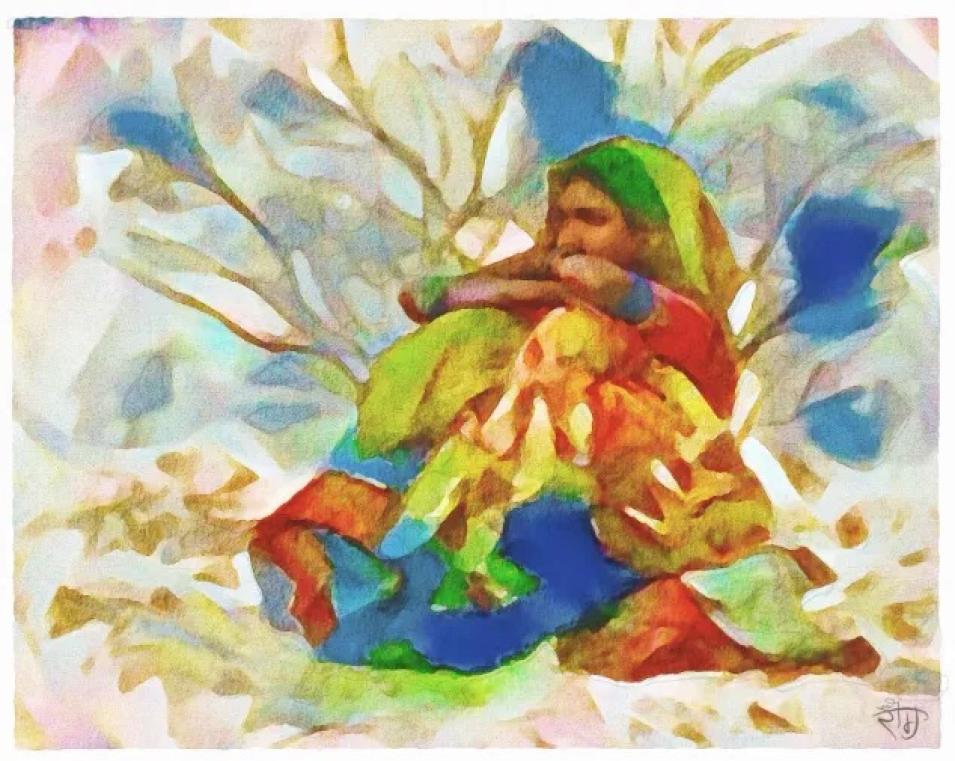Both my parents are well-known artists (A. Ramachandran and Chameli Ramachandran). I have always wanted to collaborate with my father on some creative project but never knew specifically what that could be. My collaborations with him growing up were always limited to helping him with stretching canvas and moving his large paintings from one place to another to show visitors to his studio.
Later in life, I created and still maintain his website. While his website is meant as a medium to reach his fans worldwide directly and as a knowledge repository about his lifetime of creative endeavors, creating and regularly updating his website has allowed me to stay connected with his works even though we now live thousands of miles apart.
On my last visit to see my parents, I saw all the new paintings my father completed during the pandemic. Focusing on his creative process was his coping mechanism during the pandemic. I also reconnected with an old schoolmate, and she invited me to explore places in Delhi that I had not visited for over two decades.
Based on these two experiences, the concept of Snapshots of a Moment in Time germinated in my mind. In this series, I wanted to use visual imagery that was very Indian and an inherent part of my father’s paintings. I also wanted to stylize it not based on his paintings but on a motif within his paintings — how he visually represents clouds or hills.
Once I completed the series, I was curious to treat this imagery set as a “Turing test for art,” specifically my father’s art. What did he think about the results? What did I think of the whole experiment? I would like to add a caveat that, in many ways, this is not a true Turing test. To generate my neural art, I use the AI algorithm as just one step in the creative process. The AI algorithm is primarily used as an augmentation tool for stylization.
I shared my result — a full set of works with my parents to review and critique objectively. And I was not spared from criticism.
"Compositions are not good."
"Figures need to be more prominent; figuration needs to be better."
"Some compositions are too sentimental, and there is too much realism in others."
"Tonal variation in the colors while stylization is not correct."
"Tum ko color sense nahi hai. (You don’t have any sense of color.) [I am color blind.]"
Out of my set of thirty-two AI-augmented neural art, they finally selected eight images.
“Yeh theek hai” (These are ok). When I explained the methodology and the algorithm, my father’s response was a classic A. Ramachandran retort: “Interesting, but too complicated; painting is better.” What was my parent’s final verdict? “Acha hai (Good) experiment. Keep trying.”
He reiterated that he would like to have been involved in the process from the beginning. He would have liked to help with the initial base images, especially with their composition. He recommended that I use less complicated images and fewer colors in the future.





